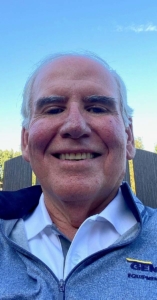What is your PEOPLE strategy? When should it begin?
What is your PEOPLE Strategy? When should it begin?
In this week’s guest blog, Don Shilling addresses your business and asks the question “what is your people strategy?” Not only that, when should it begin?
What is the “definition of a expert”? . . . . . I once heard that an expert was a factory rep at least 50 miles from home who was at your business to give you advice!
As I put words down on this page, I am in admitting I am not an expert. I just like to share thoughts and if you think they make sense then you can figure out how to implement them.
We have all gone through the exercise of developing a business strategy. Most sound a lot alike . . . . and after we have meetings and cover the walls with Post-It notes or flip chart pages our “Strategy” may be to Increase sales by 5%, or perhaps develop a new store location in new and active part of our territory, maybe we will upgrade 30% of our vehicle fleet, or our focus might be looking for that new idea like taking on a new product line. Your team I am sure puts a lot of effort into this exercise and at the end of the day it all makes sense and gives you a map for the future.
Sometimes our strategy includes elements related to people and sometimes perhaps it is brushed off! The interesting thing is each strategy, like it or not, has to include people. The people who we either need to be hired or the people we must challenge to change to fill the new roles we need to execute this new bold strategy.
Today in our current environment it might take 60 to 180 days to fill a skilled position if you can find that person at all. As I mentioned in a blog before, we grow our own skilled technical people and that takes much longer than just a couple of months. Whether you promote from within or just need to re-train existing people it takes just as long. We must be prepared to admit this will probably be our weakest link in our strategy and address it far in advance of the annual Strategy Session if we want any of our strategies to succeed.
In an earlier phase of my career I was CEO of my organization back when I spearheading strategy development. I soon realized that was not just HR’s job to fill positions, it was mine! Not to “micro-manage” HR or replace them but to assist HR in getting involved with “People Attraction”.
Now People Attraction can take on many forms. We did the same everyone does, we checked our wage packages, our benefit packages, we talked about culture and we did employee rewards programs, reviewed our facilities to make sure they were safe and comfortable for our workforce. We all have to do that!
However, I felt compelled to go beyond that. I started by getting involved in local Technical Colleges where we might find our next employee. We tried serving on Advisory Boards and helping connect with these Institutions on a more intimate basis. We got involved in the local Chamber of Commerce committees that dealt with employment practices and trends. Made an effort to get involved with State Technical Education Agencies to see what was going on and to give advice and donations of resources where it made sense to promote our industry.
Last but not least I got involved with our local Workforce Development Council. In our State it is Governor appointed and encompasses a cross section of people and agencies in the State where we get to together and work to solve workforce issues. In most cases we have developed recommendations to our State legislature in development programs to attract, educate or retain our workforce. I have testified numerous times to Legislative Committees to spell out to them the needs of business and industry in our region and promote the things that will improve our workforce efforts. For example, last session we got a law passed to make tuition reimbursement to an employee not subject to income tax and we help enact a program to provide State matching dollars with private dollars for “High Demand Jobs” tuition education reimbursement.
This was kind of a “hidden” part of our strategy. Has it worked you might ask? I think so. As frustrating as it can be to deal with a cross section of leaders from industry, labor, education and government it is worth the effort.
Now when we sit down and set a strategy where perhaps we think we need a half dozen additional skilled employees to increase our market penetration it becomes an attainable goal and not a goal where are the end of the year, we have excuses for its failure. To sum up – as an Executive in your organization you must get involved and become part of the Strategy before there is a Strategy! Good luck.






